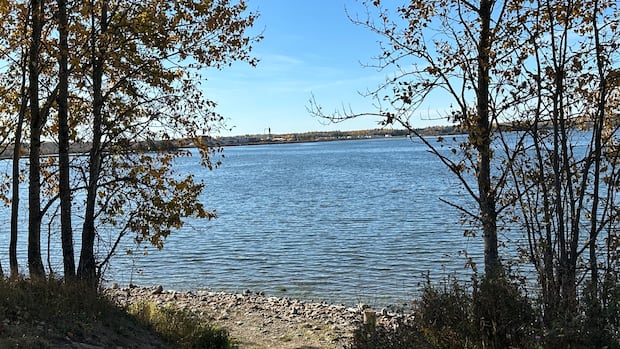SudburyThe coroner’s jury examining the death of five people in Constance Lake First Nation during an outbreak of blastomycosis has delivered 79 recommendations to prevent similar deaths. Jurors heard from 33 witnesses over 21 days in exhaustive look at health, environmental and systemic factors Kate Rutherford · CBC News · Posted: Nov 19, 2025 5:46 PM EST | Last Updated: 2 hours agoListen to this articleEstimated 5 minutesThe audio version of this article is generated by text-to-speech, a technology based on artificial intelligence.One of the recommendations stemming from an inquest into the deaths of five members of Constance Lake First Nation includes developing a plan to address blue-green algae in Constance Lake, as well as cleaning up a hill of sawdust from an abandoned mill site at the entrance to the community. (Kate Rutherford/CBC)A coroner’s jury has determined the deaths of five people in Constance Lake First Nation during an outbreak of a fungal disease, to be natural, rather than undetermined, as some lawyers had requested.The verdict comes on the fourth anniversary of the death of Luke Moore, 43, in Notre Dame Hospital in Hearst, from blastomycosis.Moore died after repeatedly seeking treatment at the hospital for a respiratory illness that was misdiagnosed as pneumonia. Two more people, Lorraine Shaganash, 47, and Lizzie Sutherland, 56, died in each of the next two days, followed by Mark Ferris, 67, and Douglas Taylor, 60.Blastomycosis is caused by inhaling invisible spores that are created when hot weather combines with elements such as feces, and decaying plant matter in wet soil, and is treated with antifungal drugs rather than antibiotics.Nearly 50 people from the community of about 800 were eventually diagnosed with blastomycosis in a health crisis that locked down the First Nation and caused widespread fear and trauma, which continues today.The five jurors issued a sweeping slate of 79 recommendations after hearing from dozens of witnesses over three weeks.People in Constance Lake First Nation had to rely on Notre Dame Hospital, in Hearst, for access to medical care. (Kate Rutherford/CBC)The jurors heard testimony from Constance Lake members afraid to speak out for help at the Hearst hospital, feeling ignored, or having their concerns dismissed, and being referred to as “you people”.The jurors recommended that Notre Dame Hospital commit to Joyce’s Principle, which guarantees the right of equitable access to all social and health services for Indigenous people without discrimination. They are also urging the province to create an Indigenous Patient Ombudsperson to receive and address complaints from Indigenous patients.Jurors are also asking Indigenous Services Canda and the Ontario Ministry of Health to ensure proper funding for the Jane Mattinas Health Centre in Constance Lake, so people don’t have to travel to Hearst for treatment. As well, the health centre is tasked with securing funding for two full-time Indigneous patient navigators, and the First Nation is being asked to work with the hospital in Hearst to hire an Indigenous person as a patient navigator there.Members of Constance Lake First Nation could go to the Jane Mattinas Health Centre in their community, but there was no doctor or nurse practitioner there. (Kate Rutherford/CBC)Other recommendations call for cultural awareness training and trauma-informed care for health care professionals to be complete within 12 months, with the hospital providing a traditional healing room and allowing smudging.The inquest heard about issues with the timely transfer of critically ill patients, including Luke Moore and Lizzie Sutherland.Jurors recommended the province develop an emergency response team to be deployed during public health emergencies in northern and remote communities in Ontario, and recruit Indigenous health care professionals to serve on it.As well, they called on the Ministry of Health to speed-up the renewal of Ornge’s helicopter fleet to improve response times in transporting critically ill patients.Another group of recommendations deal with getting answers about the poorly understood origins of blastomycosis.Jurors heard that the spores that cause the disease are naturally occurring, extremely difficult to predict and the source, or sources, of this particular outbreak have never been pinpointed.They said a group of scientists with Four Rivers Environmental Services should seek money for research, and recommended they continue with sampling and testing with an eye to developing an early warning systm to alert the community to conditions that may produce blasto spores in real time.Part of the continuing efforts, wrote the jurors, should be the established of a research hub for blastomycosis in Constance Lake. Clean-up of long-standing toxic environmental issues orderedThe jurors ordered some envrironmental clean-up of sites in and near the First Nation, which leaders have long identified as health hazards.The inquest heard that people in Constance Lake were concerned that sewage back-up in their basements created mold that contributed to respiratory illness.The jurors said Matawa First Nations Management and the First Nation must inspect homes and develop a plan to remediate any mold problems within three months.People testified at the inquest that blue-green algae renders Constance Lake unusable and toxic, and the jurors issued a directive for government and industry to take steps to address it.A ridge of sawdust from an historic lumber camp sits untreated near the entrance to Constance Lake First Nation, causing concern about pollution (Kate Rutherford/CBC)As well, the jurors are supporting the nation in its call for the Ontario Ministry of Natural Resources to clean up a pile of sawdust from an abandoned mill site, near the entrance to the community.While the recommendations are not legally binding and are not intended to find fault or liability, jurors recommended the formation of a blastomycosis implementation committee to oversee the carrying out of their 79 recommendations.Elder Florrie Sutherland closed the 22nd and final day of the inquest with an eagle song and prayer, urging all parties to sit down with the recommendations and get to work.”Let the leadership know that this needs to happen and cannot be sitting there,” she said.ABOUT THE AUTHORKate Rutherford is a CBC newsreader and reporter in Sudbury, covering northern Ontario. News tips can be sent to kate.rutherford@cbc.ca
Thursday, 20 Nov 2025
Canada – The Illusion
Search
Have an existing account?
Sign In
© 2022 Foxiz News Network. Ruby Design Company. All Rights Reserved.
You May also Like
- More News:
- history
- Standing Bear Network
- John Gonzalez
- ᐊᔭᐦᑊ ayahp — It happened
- Creation
- Beneath the Water
- Olympic gold medal
- Jim Thorpe
- type O blood
- the bringer of life
- Raven
- Wás’agi
- NoiseCat
- 'Sugarcane'
- The rivers still sing
- ᑲᓂᐸᐏᐟ ᒪᐢᑿ
- ᐅᑳᐤ okâw — We remember
- ᐊᓂᓈᐯᐃᐧᐣ aninâpêwin — Truth
- This is what it means to be human.
- Nokoma












